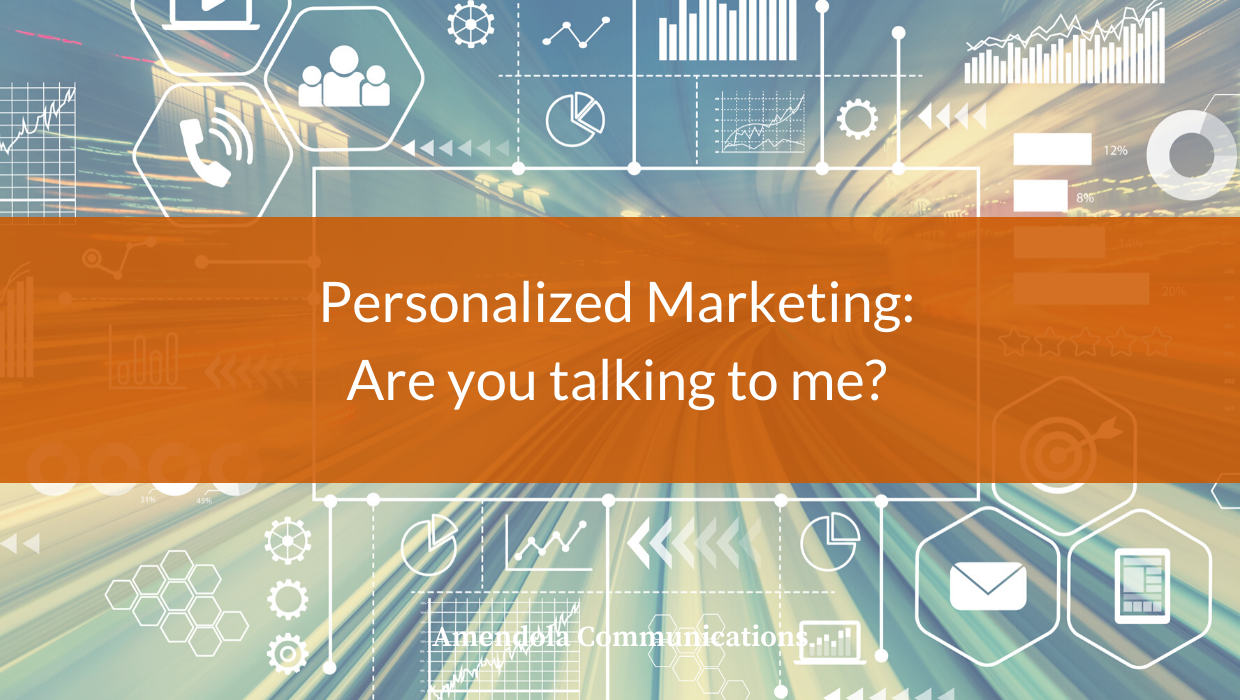The competition for consumers’ time is more critical than ever as they continue to be bombarded with the “noise” of messaging and advertisements in nearly every facet of life. According to Forbes, the average person is exposed to 4,000 10,000 advertisements each day. Without a strong, compelling message your brand is likely to get overlooked regardless of how life-changing it may be.
Think of your typical day and the amount of noise you encounter whether that be from emails, online ads, social media, commercials, and so on. Likely you along with many of your buyers have started to block much of the unnecessary noise. Many now use DVRs to avoid commercials or have tightened privacy on their social media pages to avoid unwanted ads.
Due to the overwhelming number of messages each day, it is critical that brands start becoming more personalized in their approach. Personalized marketing is not going away any time soon in fact, it is one of the top marketing trends for 2020. Research shows that more than 63% of consumers are highly annoyed with the way brands interact with them and blast irrelevant information.
What’s a personalized message?
The idea of what makes something personalized has changed. A recent survey by Pure360 suggests brands still rely only on basic personalization. Many companies continue to take the lazy approach by simply substituting the consumer’s name into the salutation of an email, while others get overzealous and appear creepy.
We’ve all received those emails that address us by name but have no idea who we are or what we care about. Take, for instance, a male who receives an email, addressing them by name, that then continues to discuss problems during menstruation and how a new sanitary product could change their life. This not only makes the company appear lazy and uneducated but could also damage the brand while wasting both resources and money.
Research shows that 81% of consumers want brands to get to know them and know when to approach them and how. This goes beyond dropping in names, cities or titles to truly engaging with consumers. While this may seem daunting, many marketers have large databases that contain numerous data points across all consumer segments. Unfortunately, many do not take advantage of this data.
Making it personal
The best personalization efforts are when consumers see a brand’s content or messaging in a natural and timely manner. Using the buyer’s or consumer’s past history engagements paired with current activities is one of the best ways to engage an audience. Fortunately, marketers have tools and technology that make delivering dynamic content a reality.
Take for example the future purchasing recommendations that Amazon makes based on what the consumer has previously purchased or viewed. These personalizations are typically more helpful and appreciated. In addition, grocery stores will often send coupons based upon your recent purchases. Lastly, we’ve all been victim of perusing one site and then looking at our Facebook page and seeing ads invade our feed. Brands must be careful with retargeting ads and these type of personalizations, which is why having a clear understanding of the consumer’s history and current activities is critical.
On a good note, it doesn’t even have to be this hard. In 2014, as soda consumption was steadily declining, Coca-Cola came out with its “Share a Coke” campaign. This simple, but extremely effective campaign personalized bottles by printing first names on them Share a Coke with Bethany, Share a Coke with Jeremy, etc. The campaign appealed to consumers because they saw their own name on a big brand. The campaign helped the company grow sales for the first time in 10 years.
Time to get personal
So if you haven’t yet, you better start getting more personal with your buyers or your competitors will. Below are some key considerations for diving into personalized messaging.
- Segment your audience. Hopefully you have already done this but as you know not all of your consumers have the same needs nor do they have them at the same time. This is really step 1 before you can begin personalization.
- Create content that matters. Not all content is created equal. Consider implementing dynamic content where your buyer can see the right content at the right time.
- Give your business a face. Your company should have a human identity is it fun, professional, goofy? Your company must have an identity that buyers can connect with whether you’re selling B2C or B2B.
- Make better recommendations. Don’t recommend a vacuum cleaner to someone who just purchased hardwood floors. Know your audience and tell them about products or solutions that they actually could use and need.
- Test and measure. You won’t always guess right. Some campaigns will have double-digit conversions while others will fall flat. The good news is most technologies allow you to do A/B testing and will even determine the winner for you before you blast an entire segment with a poorly designed campaign.
There’s no better way to get started than to get started, monitor your results, repeat what works and ditch the rest. Trust me if you don’t do it, your consumers will start identifying and connecting with your competitors, who may already be delivering personalized marketing.
